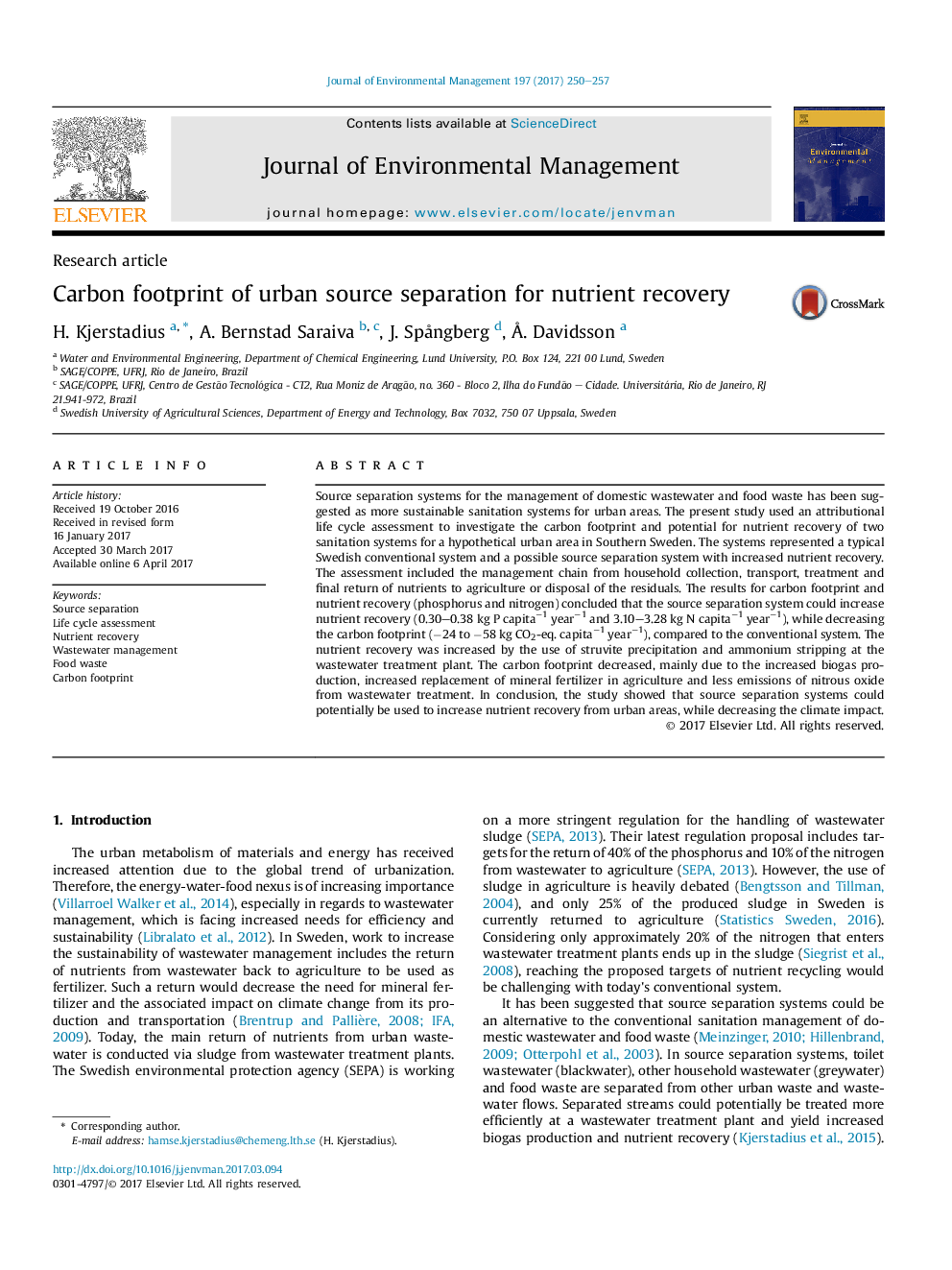| کد مقاله | کد نشریه | سال انتشار | مقاله انگلیسی | نسخه تمام متن |
|---|---|---|---|---|
| 5116951 | 1485219 | 2017 | 8 صفحه PDF | دانلود رایگان |
- Source separation system decreases carbon footprint of urban sanitation management.
- Source separation increases recovery of nutrients from urban areas to agriculture.
- Useful results for long-term planning of urban sanitation systems.
Source separation systems for the management of domestic wastewater and food waste has been suggested as more sustainable sanitation systems for urban areas. The present study used an attributional life cycle assessment to investigate the carbon footprint and potential for nutrient recovery of two sanitation systems for a hypothetical urban area in Southern Sweden. The systems represented a typical Swedish conventional system and a possible source separation system with increased nutrient recovery. The assessment included the management chain from household collection, transport, treatment and final return of nutrients to agriculture or disposal of the residuals. The results for carbon footprint and nutrient recovery (phosphorus and nitrogen) concluded that the source separation system could increase nutrient recovery (0.30-0.38 kg P capitaâ1 yearâ1 and 3.10-3.28 kg N capitaâ1 yearâ1), while decreasing the carbon footprint (â24 to â58 kg CO2-eq. capitaâ1 yearâ1), compared to the conventional system. The nutrient recovery was increased by the use of struvite precipitation and ammonium stripping at the wastewater treatment plant. The carbon footprint decreased, mainly due to the increased biogas production, increased replacement of mineral fertilizer in agriculture and less emissions of nitrous oxide from wastewater treatment. In conclusion, the study showed that source separation systems could potentially be used to increase nutrient recovery from urban areas, while decreasing the climate impact.
133
Journal: Journal of Environmental Management - Volume 197, 15 July 2017, Pages 250-257
